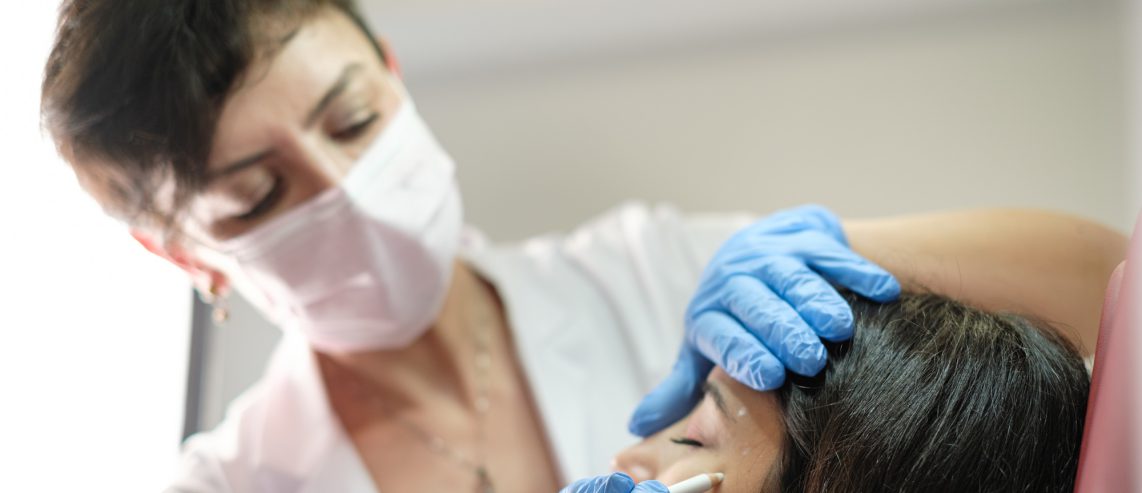Cosmetic plastic surgery of the eye involves the soft tissue and bones surrounding the eyes, eyelids, tear ducts, and eye sockets. It is also known as oculoplastic surgery.
According to The Aesthetic Society, nearly 150,000 eyelid procedures took place in the United States in 2021. And while cosmetic eye procedures are growing in popularity, not all are elective.
“Eyelid procedures are done for a number of reasons,” says Guy Stofman, MD, plastic surgeon, UPMC. “As we age, eyelid skin becomes more lax and can often give the impression of constantly looking tired. Elective surgery to address excess skin of the upper eyelid and ‘bags’ on the lower eyelid makes patients feel good about their looks and creates a more youthful appearance.”
In many cases, “the excess skin can affect a person’s ability to see,” Dr. Stofman says.
“These operations improve a patient’s vision,” he says. “If the eyelids are not properly positioned, this can be addressed surgically as well.”
Never Miss a Beat!
Subscribe to Our HealthBeat Newsletter!
Thank you for subscribing!
You can now select the specific newsletters you'd like to receive.
You are already subscribed.
Subscribe to more newsletters in our email preference center.
Sorry, an error occurred. Please try again later.
Get Healthy Tips Sent to Your Phone!
Common Surgical Eye Procedures
Common procedures include:
- Eyelid surgery (Blepharoplasty/ptosis repair): Eyelid surgery is a common procedure to correct the sagging of both the upper and lower eyelids. This procedure can either be an elective cosmetic surgery or a medically necessary surgery if the droopy upper lids cause visual impairment.
- Ectropion/entropion repair: Entropion is the inward turn of your eyelid. Ectropion/entropion repair is a common procedure that corrects the abnormal positioning of the lower eyelids as a result of disease or aging. These procedures are mostly medically necessary surgeries.
- Brow lifts: Brow lifts are performed on droopy eyebrows. They can be lifted surgically or by using BOTOX®.
- Dacryocystorhinostomy (DCR): Dacryocystitis is an inflammation of the tear-producing gland. A viral or bacterial infection is the most common cause. The DCR procedure is the surgical repair of the blocked tear ducts.
- Intense Pulsed Light treatment (IPL): IPL is a nonsurgical procedure used to treat pigmented spots, veins, red spots, and resurfacing of the skin of the face, including around the eyes.
- BOTOX®/fillers: BOTOX® or other fillers are nonsurgical options to treat wrinkles and volume loss of the face and area around the eyes.
If you are considering any of the above procedures, please contact the UPMC Department of Plastic Surgery.
About Plastic Surgery
Plastic surgery is an option for both cosmetic and reconstructive needs, and the UPMC Department of Plastic Surgery can help with both. Whatever improvement you seek, we can create an individualized treatment plan to help you achieve your desired results. Through our research and clinical trials, we have used cutting-edge techniques in our treatments for more than 70 years. We also have one of the largest academic plastic surgery departments in the United States and operate one of the region’s top centers for restorative medicine.
Plastic surgery is an option for both cosmetic and reconstructive needs. The UPMC Department of Plastic Surgery can help with both. We will work with you to create an individualized treatment plan to help you achieve your desired results. Through our research and clinical trials, we have used cutting-edge techniques in our treatments for more than 70 years. We also have one of the largest academic plastic surgery departments in the United States and operate one of the region’s top centers for restorative medicine. Our goal is to improve your quality of life. Find a provider near you.
